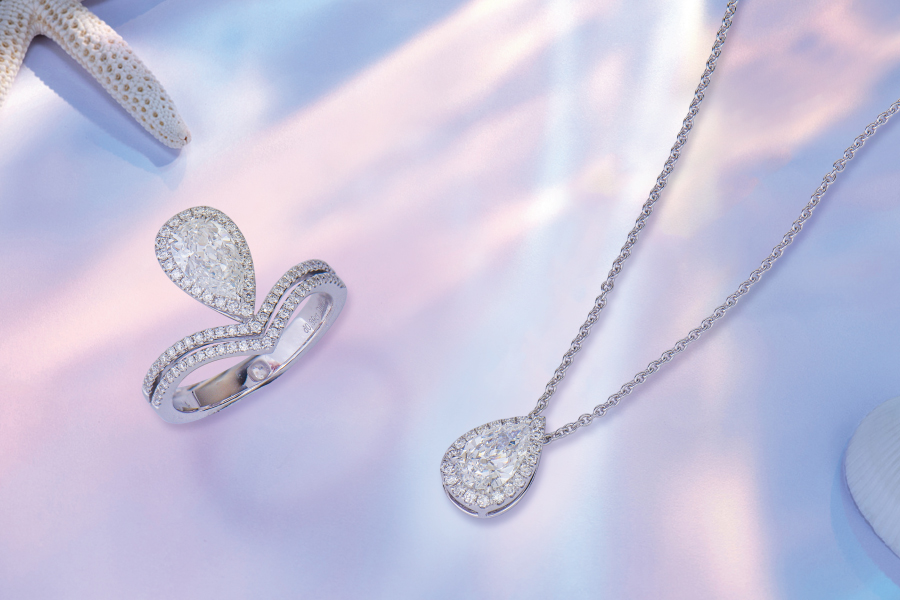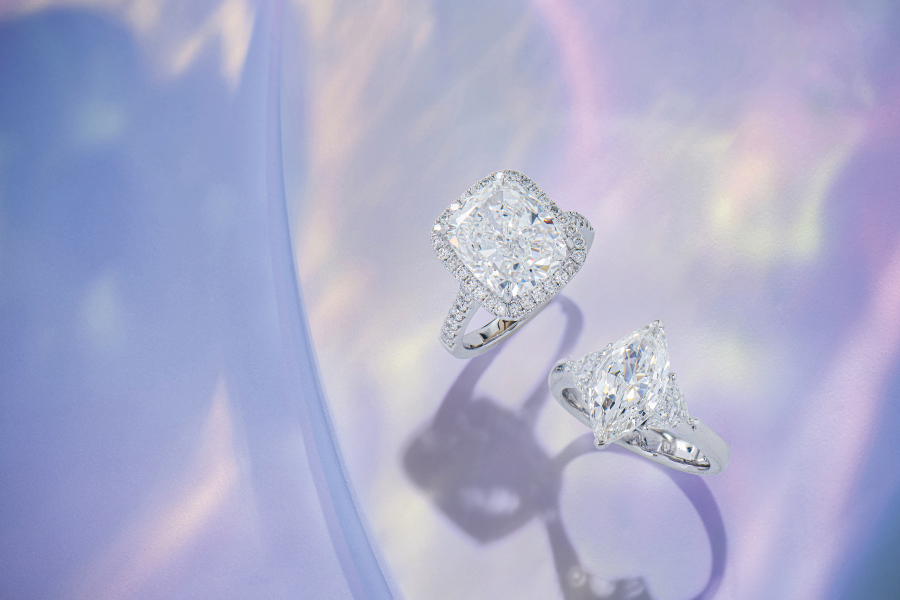Diamonds are, the song says, a girl's best friend, and they are certainly among the most desired gemstones of all, especially when it comes to larger investments like a diamond engagement ring. However, best friend or not, not every diamond, or diamond ring you come across, will actually be a diamond at all, it may, in fact, be cubic zirconia.
While cubic zirconia jewelry can be very attractive in itself, especially in larger pieces of costume jewelry, problems arise when buyers mistake it for, or it is represented as, real diamond. However, if you are not an expert, how can you even tell the difference between a cubic zirconia and a diamond? And what are the differences anyway? These, and other related issues, are what we are going to take a closer look at here.
What is Cubic Zirconia?
Cubic zirconia is a man-made substance predominantly composed of zirconium dioxide (ZrO2) that can be mass-produced at low costs. CZ is the most popular diamond simulant on the market because of its close aesthetic resemblance to actual diamonds and affordable cost.
It's worth noting that cubic zirconia is sometimes called a fake, imitation, or faux diamond because of its resemblance to the real thing. It is also frequently advertised as a genuine diamond on unregulated sites such as eBay or Craigslist, posing a risk to inexperienced buyers.
The Differences Between Diamond and Cubic Zirconia
If a jewelry seller is an honest one, they will be quite up front about the fact that a piece is cubic zirconia rather than a real diamond. And, as we mentioned, there is nothing wrong with that, although very few buyers would consider a CZ engagement ring over a real diamond engagement ring if the latter is in their budget.
The problem, as we mentioned, arises when a CZ ring is represented as a diamond. Understanding more about the real differences between the two can be helpful if you are currently shopping, especially if doing so online, for a diamond engagement ring, or even a fancy colored diamond engagement ring.
Hardness
Diamonds are one of the hardest substances on the planet, with a Mohs hardness rating of 10. CZ has a Mohs hardness of 8.5, but don't be fooled by this figure into thinking it's almost as durable as a real diamond.
Because the Mohs scale acts like an exponential scale, diamonds are many times harder than CZ.
What does this mean in practical terms? Cubic zirconia is far more prone to scratching due to its reduced hardness. If you're not careful with your CZ jewelry, and it comes into contact with something abrasive, the stone will lose its lustre and become worn out quickly. Because of its less chemically stable bonds and proclivity to absorb oils, lower quality CZ might become foggy over time, too.
Clarity/Inclusions
Unlike natural diamonds, cubic zirconia simulants are manufactured in a lab and are always perfect. Due to the violent formation process that diamonds go through in nature, perfect diamonds are extremely rare. If a diamond is perfect, and yet 'reasonably' priced, the chances are it's not the real thing.
Color - Fancy colored diamonds can be found in a wide range of hues and colors and because of both their beauty and their still relatively rare place in the diamond engagement ring market - meaning that the buyer who chooses one will be making a rather unique choice - they are gaining popularity. Which means so is colored CZ.
Blue and red fancy colored diamonds, for example, are highly scarce in nature and attract high prices. Similarly, cubic zirconia stones come in a variety of colors, from delicate yellow to vivid red.
When it comes to color, CZ stones have a tendency to take on more saturated colors and richer hues. The richest hued real fancy colored diamonds command the highest prices, so again, if the price seems too good to be true, it probably is.

Engagement rings and a diamond necklace
How Can a Layperson Tell the Difference Between Cubic Zirconia and a Diamond?
Not sure if a diamond engagement ring, or other item of diamond jewelry, is quite what it seems? Bringing a diamond to a jeweler for identification is the best way for a layperson to determine if it is real. There are a few ways to do it yourself at home, but we recommend using caution because the results can vary depending on experience and basic gemological understanding.
Diamonds are one of the hardest substances on the planet, and when polished, they can acquire a high degree of brilliance. You can study the facets of the gemstone with a 10X loupe to determine if the edges/surfaces are clean and crisp.
Cubic zirconia stones are softer than diamonds and are more likely to abrade or scratch over time. If the gemstone's edges or facet surfaces are worn down, it's a dead giveaway that it's not a diamond. This method isn't failsafe, though, because a "new" CZ might appear as immaculate as a flawless diamond.
On the girdle of most diamonds acquired with a reputable grading report from GIA or AGS, there will be an inscription number. Mass-produced CZs, on the other hand, are not inscribed. If you have a 10X loupe, try looking for an inscription along the gemstone's girdle.
The most accurate home-based approach for identifying a true diamond from a fake stone, in our experience, is to utilize a diamond tester, which you can get on Amazon or eBay. Because diamonds are far more efficient at carrying heat than cubic zirconias, these tests focus on the detection and concept of heat transfer.
Buying from a reputable jewelry vendor is the best method to protect yourself and get a high-quality diamond engagement ring. When purchasing diamonds, make sure that they are accompanied by a GIA or AGS grading certificate.
Finally, using common sense and conducting research before making a purchase will assist you in making better selections and avoiding frauds. A diamond engagement ring, whether a traditional 'clear' diamond or a fancy colored diamond engagement ring, is a large purchase, both in terms of money and significance, so taking the time to get it right is always the best idea (and the best way to avoid scams!)






